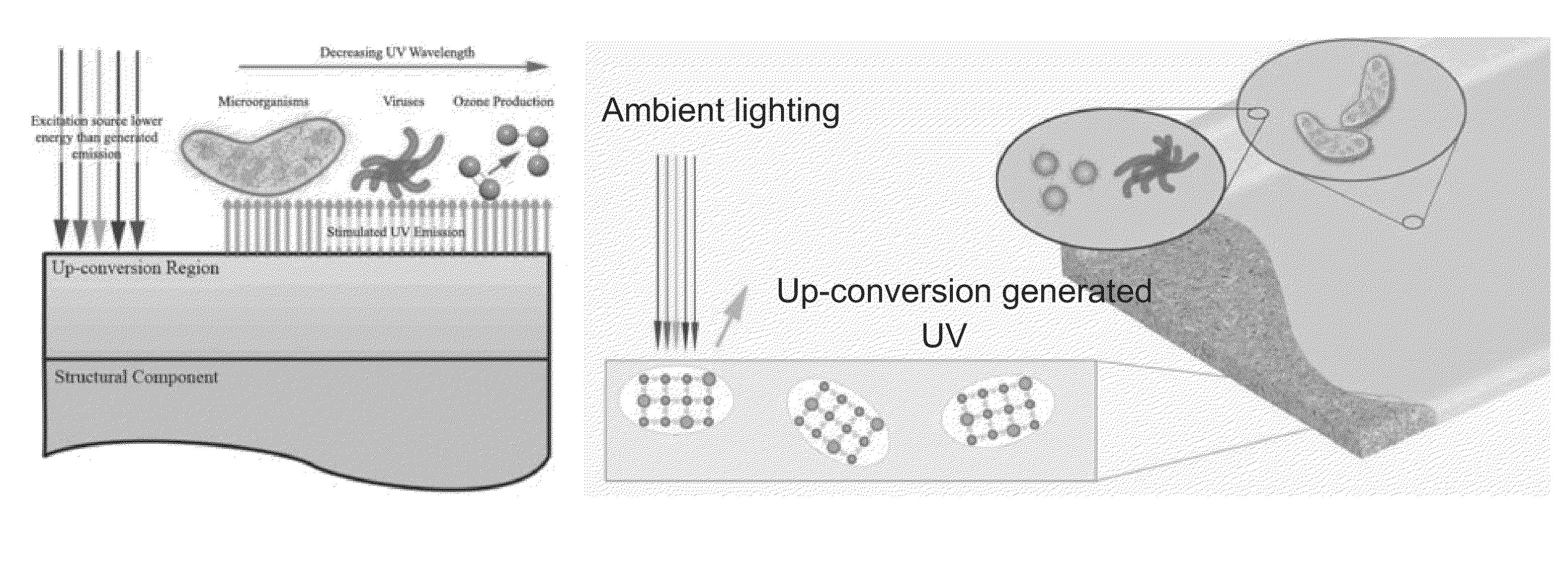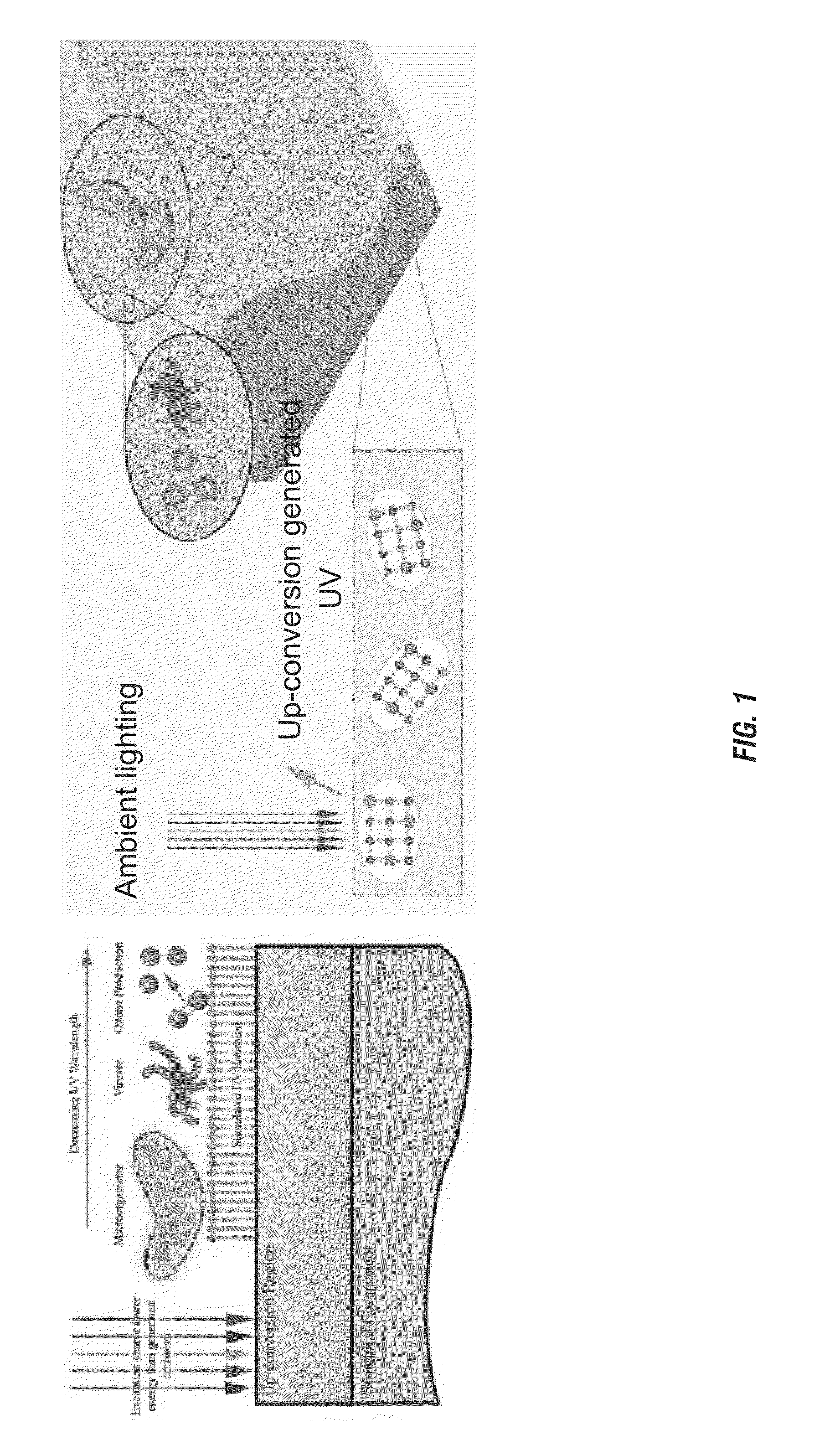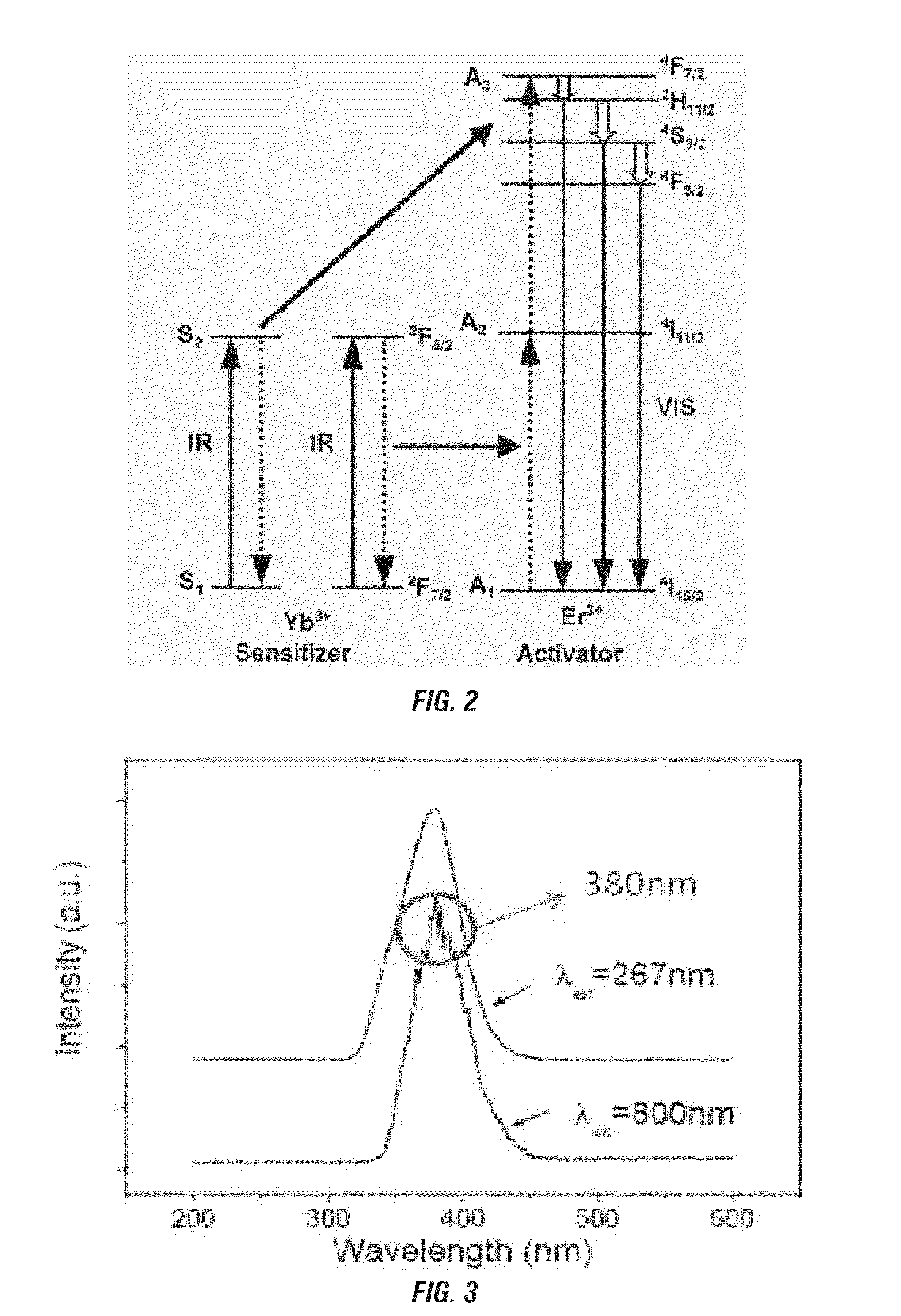Up-conversion luminescent coatings/materials for antimicrobial applications
- Summary
- Abstract
- Description
- Claims
- Application Information
AI Technical Summary
Problems solved by technology
Method used
Image
Examples
Embodiment Construction
[0073]The following description is merely exemplary in nature and is not intended to limit the present disclosure, application, or uses.
[0074]The present invention generally provides for a technique for the sterilization of surfaces and floors in health care facilities, food preparation areas, kitchens, bathrooms, and other general public areas. A further aspect of the invention is to provide surfaces or coatings that produce ultraviolet (UV) light from lower energy sources, where the UV light will continuously bombard microorganisms on the surface or coating, or near the surface or coating with UV radiation to inhibit growth and ultimately kill the microorganisms as seen in FIG. 1. An additional aspect of the present invention provides that the UV radiation from the coatings breaks down bacteria and virus' cell walls, disrupts their cell DNA (effectively stopping reproduction), and compromises cell membranes (effectively killing the organism). Another aspect of the current inventio...
PUM
 Login to View More
Login to View More Abstract
Description
Claims
Application Information
 Login to View More
Login to View More - R&D Engineer
- R&D Manager
- IP Professional
- Industry Leading Data Capabilities
- Powerful AI technology
- Patent DNA Extraction
Browse by: Latest US Patents, China's latest patents, Technical Efficacy Thesaurus, Application Domain, Technology Topic, Popular Technical Reports.
© 2024 PatSnap. All rights reserved.Legal|Privacy policy|Modern Slavery Act Transparency Statement|Sitemap|About US| Contact US: help@patsnap.com










